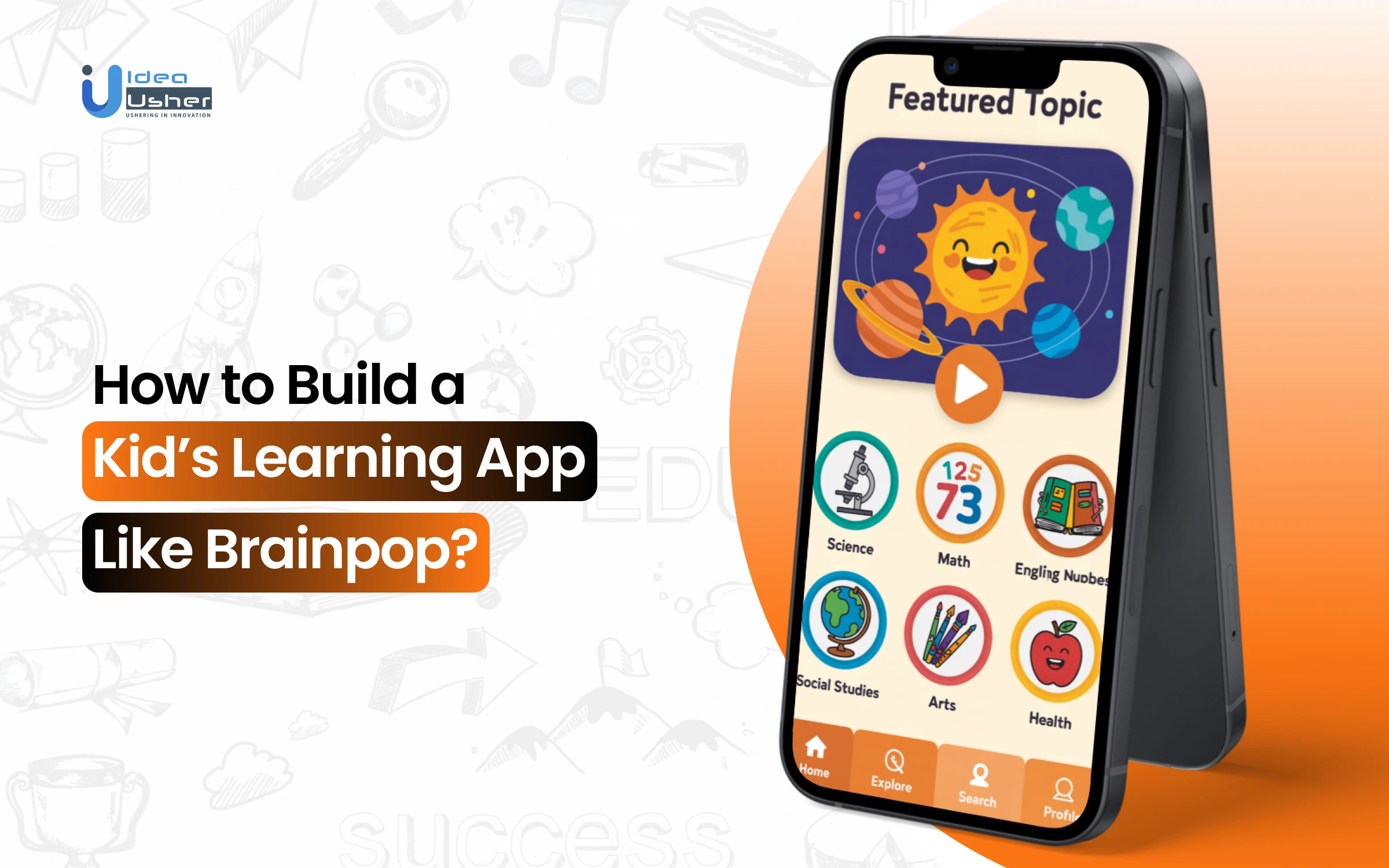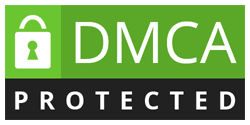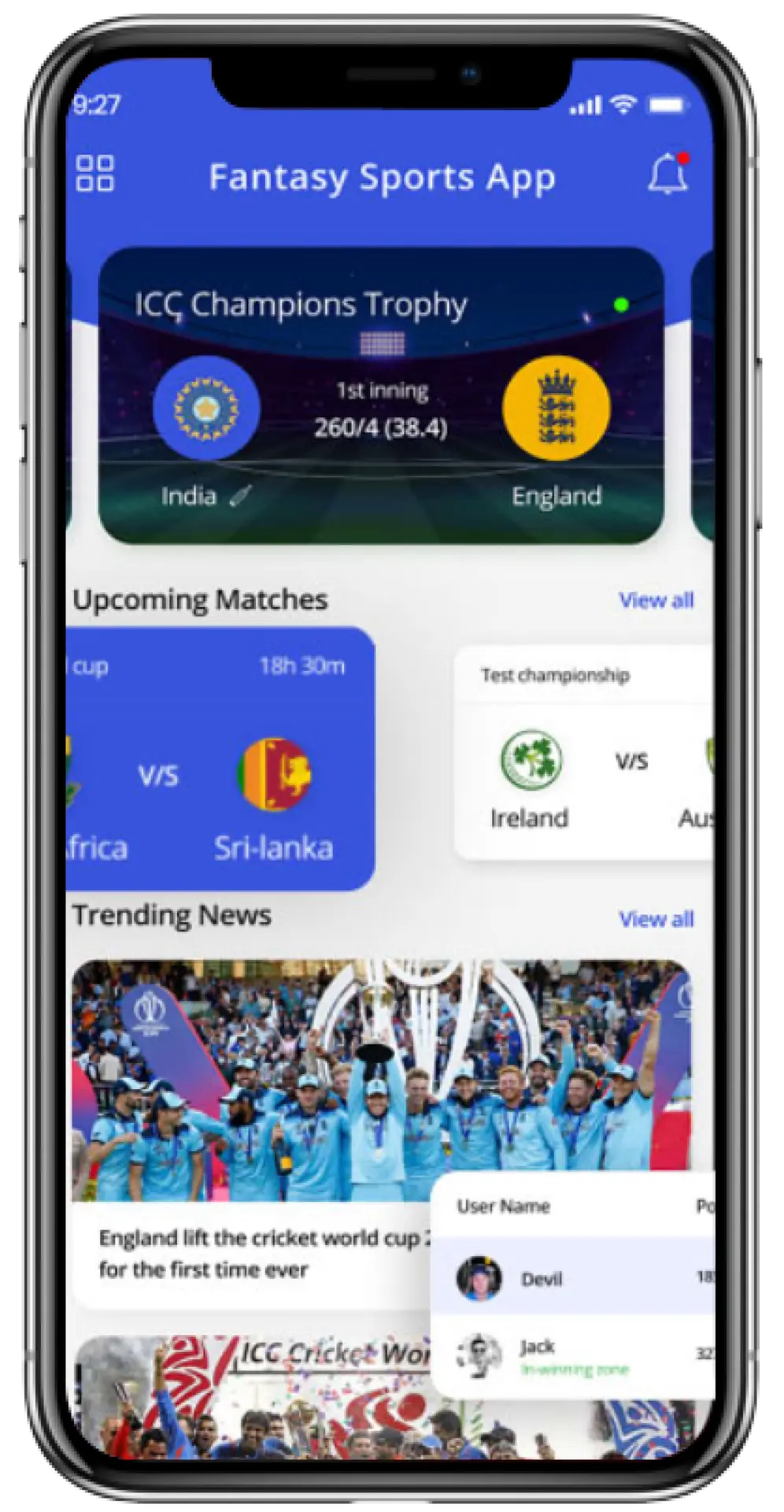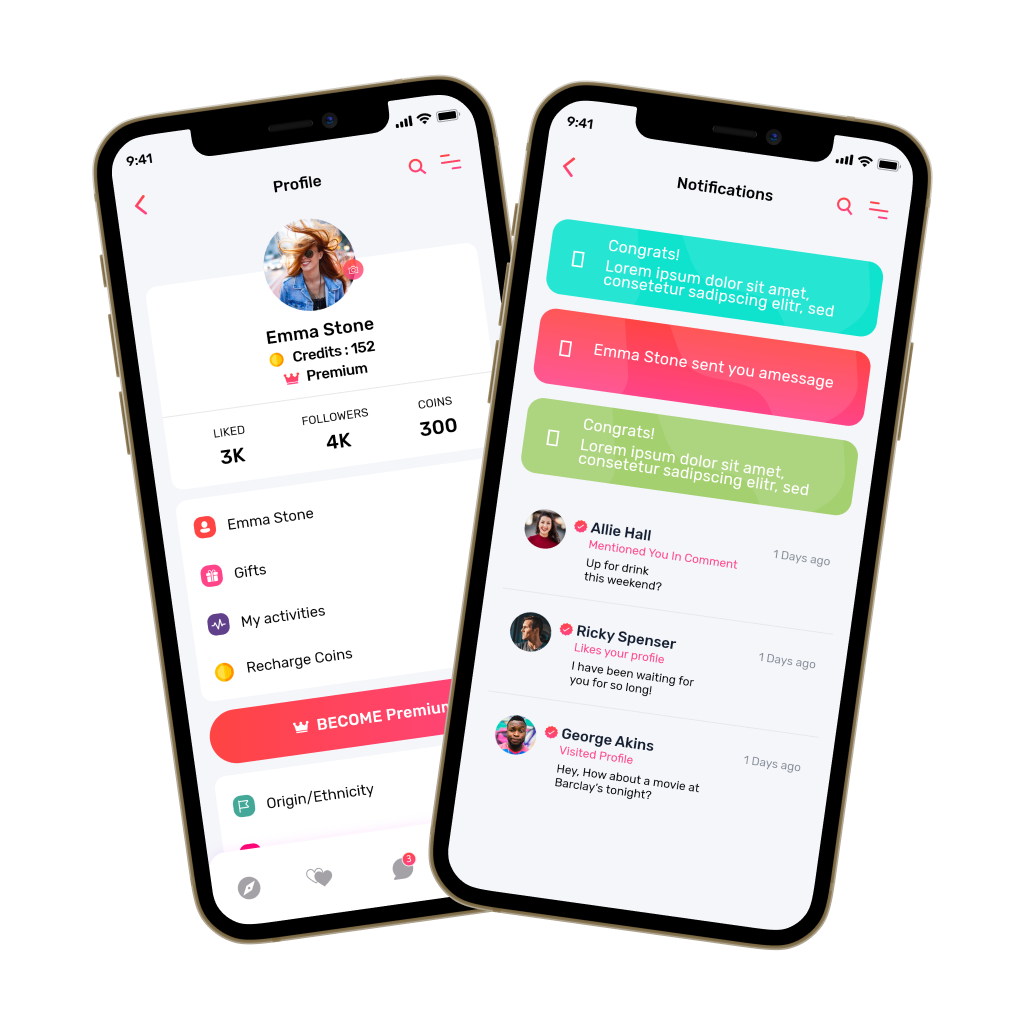Screens have become a normal part of childhood, and parents now look for tools that genuinely improve their kids’ digital time. Schools also want platforms that support interactive learning and meet the needs of fast-moving, digital-native students. That’s why the popularity of kids’ learning apps is growing so quickly.
Apps like BrainPOP show how strong design and clear storytelling can turn tough topics into simple moments of discovery with features like animated explainers and short guided quizzes. They also offer subject-based mini units that help children explore topics at their own pace without feeling overwhelmed.
Over the past decade, we’ve partnered with a wide range of EdTech startups and built numerous kids’ learning platforms powered by adaptive learning intelligence and interactive content engineering. With this hands-on experience shaping real classroom and at-home learning, we’re putting together this blog to walk you through what it actually takes to build a kids’ learning app like BrainPOP. Let’s dive in!
Key Market Takeaways for Kids’ Learning Apps
According to StratsResearch, the kids’ learning apps market is scaling fast, with the global education apps segment valued at USD 6.01 billion in 2024 and projected to reach USD 33.51 billion by 2033 with a strong 21.04% CAGR from 2025 to 2033. This sharp rise reflects broader shifts in how families use technology for early learning, supported by widespread smartphone access, remote learning habits, and government-backed digital education efforts.
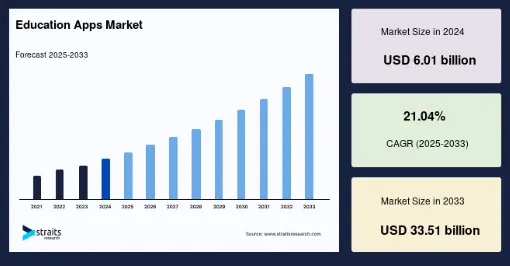
Source: StratsResearch
These conditions have pushed education apps into the top categories on both Google Play and the Apple App Store, signaling consistently high demand and everyday usage. As app quality and personalization improve, parents are becoming more comfortable treating mobile learning as a meaningful extension of the classroom rather than a distraction.
Kids’ learning apps benefit most from this shift, with 68% of parents prioritizing educational value when choosing what to download.
Standout examples include Khan Academy Kids, which delivers a free, ad-free curriculum for ages 2–8 and has surpassed 5 million installs, and Duolingo Kids/ABC, known for short, engaging language lessons and strong parental controls. Both rely on storytelling and gamified progression to keep young learners motivated while reinforcing real academic skills.

What is the BrainPOP App?
BrainPOP is an educational platform designed for learners in grades 3 to 8 and above that features animated instructional videos paired with interactive learning activities. The Discover section on the website and mobile app allows students to explore subjects, watch aligned content, and complete follow-up activities. The platform works well for classroom use and for independent learning.
Here are some of its standout features,
- Animated movies that introduce concepts in science, social studies, math, and other subjects in a fun and structured way.
- Interactive quizzes that help students check their understanding right after watching a video.
- Student progress history that shows viewing activity and quiz performance so learners can track improvement.
- Accessibility tools such as captions, transcripts, read-aloud options, and adjustable text to support different learning needs.
- Standards and skill tagging that allow users to search content by topic or grade, and help educators find material aligned with curriculum goals.
How Does the BrainPOP App Work?
The BrainPOP app guides a student through a short animated lesson that introduces a concept clearly and builds core understanding. After the video, the system delivers an interactive quiz that can quickly check comprehension and send performance data to a teacher dashboard.
Behind the scenes, the platform uses secure rostering and real-time analytics so schools may track usage and teachers may manage assignments effectively.
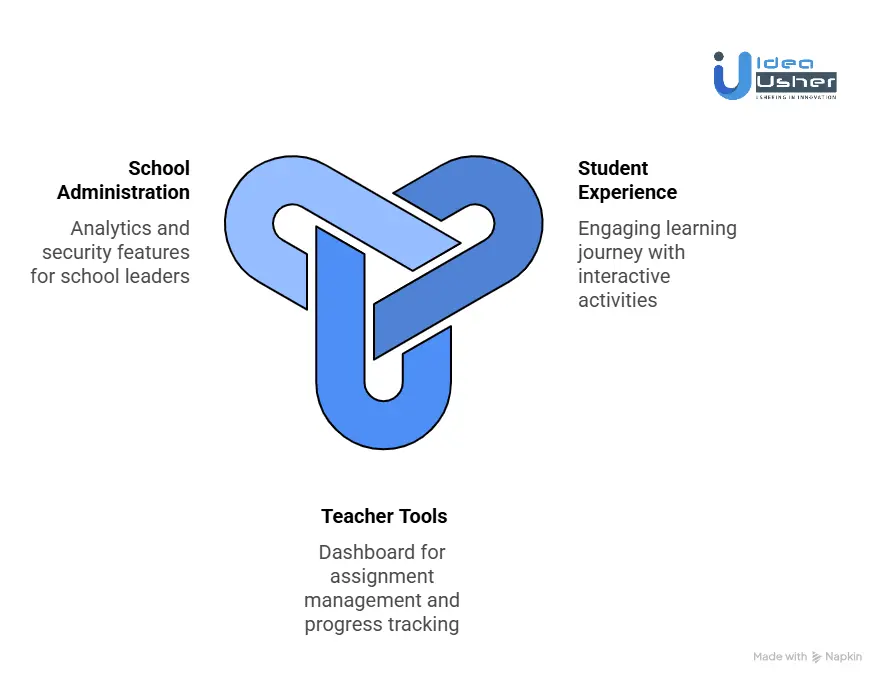
1. How BrainPOP Works for Students
For a student, BrainPOP is a guided learning environment that turns each topic into an engaging, step-by-step journey.
Step 1: Watch an Animated Lesson
Every topic begins with a short, curriculum-aligned animated movie. Characters such as Tim and Moby introduce the concept through storytelling, examples, and humor. The video is crafted to build a base understanding rather than act as passive entertainment.
Step 2: Check Understanding With a Quiz
After watching, students take an interactive quiz that immediately reinforces what they learned. The questions focus on the essential ideas covered in the video, giving students quick feedback and helping teachers see how well the material landed.
Step 3: Explore Through Activities
This is where BrainPOP goes beyond simple video learning. Students can choose from a variety of activities to deepen their understanding:
- Make-a-Map: Create a concept map to show relationships between ideas
- Make-a-Movie: Build a short animated video using their own voice and illustrations
- Games, readings, and vocabulary features: Additional resources that accommodate different learning preferences and reading levels
These activities turn students into active participants in the learning process.
Step 4: Build a Learning Portfolio
All completed quizzes, maps, movies, and activities are saved automatically. Over time, this creates a personal portfolio that shows growth, strengths, and areas to revisit.
2. How BrainPOP Works for Teachers
Teachers use BrainPOP via a dedicated dashboard to assign work, track progress, and personalize instruction.
Assignment Tools
Teachers can set up classes inside BrainPOP, assign videos and activities, and add due dates. This makes the app part of the regular classroom workflow rather than an add-on resource.
Real-Time Progress Tracking
The dashboard shows:
- Which students have completed the assignment
- Quiz results for the whole class and individual learners
- Patterns that may indicate misunderstandings or learning gaps
This gives teachers quick insight without having to grade every quiz manually.
Seamless EdTech Integration
BrainPOP connects smoothly with systems many schools already use. Through LTI integrations, it works with platforms such as Google Classroom and Canvas. Schools benefit from:
- Single Sign-On (SSO): Students use their school login
- Automatic rosters: Class lists sync without manual entry
- Grade passback: Quiz scores can be sent directly to the school’s gradebook
These integrations reduce friction and save teachers time.
3. How BrainPOP Works for Schools and Administrators
For school leaders, BrainPOP provides visibility into usage patterns and ensures the platform meets strict safety standards.
Usage and Engagement Data
Administrators can view district-level analytics that show:
- How often are teachers and students using the platform
- Which subjects or grade levels are most active
- Trends over time that help measure the value of the subscription
This information supports budgeting, curriculum decisions, and professional development planning.
Security and Privacy
BrainPOP is built to meet COPPA and FERPA requirements. That means:
- Student data is safeguarded
- No advertising is shown to children.
- The platform operates in a protected, education-safe environment
This level of compliance is essential for school procurement and long-term adoption.
What is the Business Model of the BrainPOP App?
BrainPOP’s app is built around a subscription-driven model designed for both home users and educational institutions. Although the platform offers a small collection of free videos and activities to introduce new users to its style of learning, full access requires a paid plan. This “try before you subscribe” setup works as an entry point that naturally guides families and schools toward premium tiers.
How BrainPOP Generates Revenue
Most of BrainPOP’s income comes from annual or multi-year subscriptions purchased by schools, districts, and libraries. These institutional plans typically include:
- Unlimited student access
- Classroom management features
- Curriculum-aligned tools
- Multi-seat or multi-site licensing options
Families can also subscribe separately, giving students full access for at-home learning.
Beyond subscription tiers, the company brings in revenue through:
- In-app purchases for specialized content
- Licensing and partnership deals
- Limited advertising and affiliate programs
- Professional development services that train educators to use BrainPOP effectively
The cost for districts varies widely depending on size and features. In 2024, spending ranged from about $605 for smaller plans to over $200,000 for large district-wide implementations.
Financial Performance
Even as the number of districts using BrainPOP has dipped slightly, the company has increased overall revenue. For example, in Illinois, the number of purchasing districts dropped from 274 in 2020 to 255 in 2024, yet revenue rose from roughly $2.2 million to nearly $3.5 million, which represents an increase of about 55 percent.
Industry estimates place BrainPOP’s 2024 to 2025 annual revenue at around $105 million, supported by a workforce of roughly 360 to 370 employees, which equates to about $175,000 in revenue per employee. These figures point to a mature business with strong operational efficiency.
Funding and Ownership
BrainPOP was acquired in October 2022 by KIRKBI A/S, the family-owned investment company behind the LEGO brand. KIRKBI took full ownership but allowed BrainPOP to continue operating independently. Since the acquisition, BrainPOP has expanded its product offerings, including the launch of BrainPOP Science, a program focused on middle school inquiry-based learning.
The acquisition positions BrainPOP for long-term growth in the K–12 digital education space, particularly as it expands its direct-to-consumer offerings. Before joining KIRKBI’s portfolio, BrainPOP had only one notable investment activity: a $1.5 million seed investment in Vidcode in 2017.
KIRKBI’s backing reflects confidence in BrainPOP’s role in digital learning and its potential to scale further.

How to Build a Kids’ Learning App Like BrainPOP?
Building a kids’ learning app like BrainPOP starts with a curriculum framework that keeps every lesson aligned with real classroom needs. You will then need an animation workflow that follows a clear teaching structure so each video delivers engaging and purposeful instruction. We have developed several kids’ learning apps like BrainPOP over the years and here is how we do it.
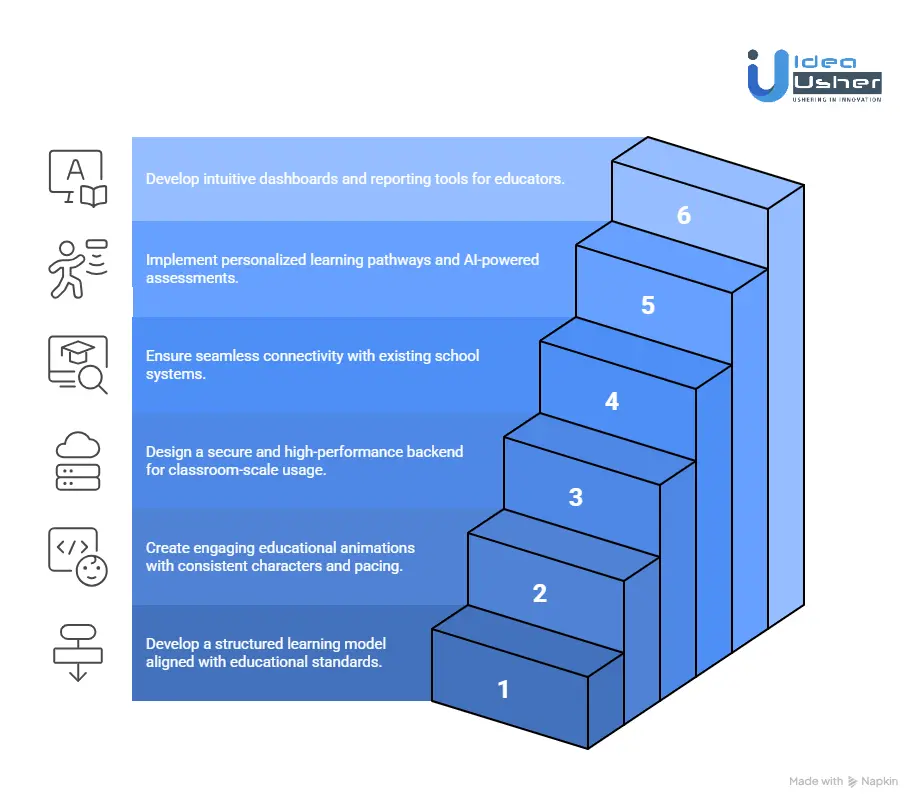
1. Curriculum-Aligned Knowledge Framework
We begin by designing a structured learning model tailored to your target age groups, subjects, and standards. Our team builds a complete taxonomy while mapping topics, grades, and learning objectives so every piece of content fits into a clear, curriculum-aligned framework.
2. Animated Instructional Content
Next, we help craft engaging educational animations with consistent characters, storytelling tone, and pacing designed for young learners. We develop storyboards, voice guidelines, and accessibility features to ensure each lesson is both fun and instructionally effective.
3. Learning Platform Infrastructure
We then design a secure and high-performance backend built to handle classroom-scale usage. This includes role-based access for students, teachers, and administrators, along with deployment models suited for schools, districts, or direct-to-consumer environments.
4. LMS, and Authentication Ecosystems
Our team ensures your platform connects seamlessly with existing school systems. We implement LTI integrations, automated rostering, and single sign-on so educators can adopt the app without friction and IT teams can manage access efficiently.
5. Implement Adaptive Learning
To personalize learning, we build adaptive pathways, dynamic quiz variations, and scaffolded support powered by AI assessment models. These features help tailor each student’s experience by providing feedback that improves understanding and retention.
6. Instructor Dashboards & Reporting Tools
Finally, we develop intuitive teacher dashboards that simplify lesson assignment, progress tracking, and grade syncing. Our reporting tools give educators clear insights into class performance and individual learning needs, making the platform truly ready for classroom use.
Capturing The Attention of Today’s 98% Mobile-Using Kids with Learning Apps
A learning app for kids must compete with polished entertainment, so it should use tight feedback loops and interactive mechanics that truly keep young users engaged. Since 98% of kids ages eight and under live in a home with a mobile device, the experience should be designed for quick sessions that still deliver meaningful learning.
You could also add adaptive challenges that respond instantly to performance, because children will stay focused when the app feels smart and responsive.
1. Build a “Game Layer”
Kids do not separate fun from learning the way adults do. If something looks or feels like schoolwork, you have already lost them. The strongest learning apps hide academic content within irresistible gameplay loops.
Examples: Duolingo ABC, SplashLearn
- Duolingo ABC breaks lessons into short, repeatable levels with bursts of positive feedback such as cheers, streaks, coins, and small wins that keep kids moving.
- SplashLearn turns math into an adventure. Children solve problems not because they should, but because it helps their character travel through a world.
Key Insight: Embed progression and rewards throughout the experience. Levels, maps, achievements, badges, satisfying sounds, and lively animations are not optional features. They are core motivators that keep kids engaged and make learning feel effortless.
2. Let Kids Be Creators, Not Just Consumers
Kids remember what they make, not what they tap through. When an app gives children the tools to build, design, or express something, the experience sticks and so does their motivation to return.
Examples: BrainPOP, ScratchJr
- BrainPOP’s “Make-a-Movie” turns kids into animators who script and direct their own videos.
- ScratchJr allows young learners to code by snapping blocks together to make characters dance, talk, and move.
Key Insight: Infuse creativity into the learning journey. Replace passive activities with opportunities for expression, such as building models, recording short reports, or composing simple creations. Creative ownership strengthens engagement and builds confidence.
3. Use Characters and Storytelling as the Glue
A good character can make even the hardest concept feel friendly. Kids connect with personalities. They look for them, trust them, and follow them from lesson to lesson.
Examples: BrainPOP, Khan Academy Kids
- Tim and Moby from BrainPOP deliver humor, curiosity, and consistency. They are more than characters. They are companions.
- Khan Academy Kids uses a cast of warm, animated animals who guide, celebrate, and empathize with the learner.
Key Insight: Develop a strong cast of characters who bring continuity and emotional connection to the learning experience. Use storytelling, humor, and guided dialogue to turn lessons into journeys that feel personal and inviting.
4. Make Every Lesson “Snackable”
Kids do not sit through long sessions on mobile. Adults barely do either. The strongest apps meet kids where they are: short bursts, quick wins, and micro-learning moments that build up over time.
Examples: Duolingo, Teach Your Monster to Read
- Both apps keep lessons to just a few minutes.
- Finishing a session feels quick, satisfying, and easy to repeat.
Key Insight: Break complex skills into small, digestible pieces. A learning objective might become a five-minute animated explanation, a short interactive challenge, and a one-minute check-in. Smaller experiences encourage repetition and prevent cognitive overload.
How Much Revenue Can a Kids’ Learning App Generate?
Understanding the revenue ceiling of an EdTech platform is essential for founders and investors. Kids’ learning apps, especially ones modeled after BrainPOP, operate in a resilient market that combines school budgets with household spending. With the right execution, the business can scale into an eight or nine-figure enterprise.
Below is a grounded, conservative financial model for what a well-built K–8 learning platform could realistically generate by Year 5.
1. B2B: School and District Subscriptions
Most EdTech revenue flows through schools and districts. Institutions typically purchase an annual site license, either per student or per building. This channel is sticky, renewals are high, and contracts often span multiple years.
2. B2C: Family and Homeschool Subscriptions
Families subscribe to at-home versions of the platform, often with reduced features. While not as steady as B2B revenue, the size of the consumer EdTech market is substantial. ABCmouse is a good example of how large this segment can become.
3. Ancillary Revenue
Additional revenue sources include:
- Licensing content to educational publishers
- Professional development for teachers
- Certifications and training programs
These streams typically contribute a modest percentage of total revenue but can be high-margin.
Building the Financial Model
Below is a conservative Year 5 projection for a startup that executes well and gains meaningful traction in the U.S. K–8 market.
Key Assumptions
- B2B Pricing: Based on public information and competitor pricing (e.g., BrainPOP, Newsela), a site license can range from $5 to $15 per student per year. We’ll use a conservative average of $7.50/student.
- B2C Pricing: Similar to apps like ABCmouse or Adventure Academy, a family subscription costs $10-$15 per month. We’ll use $12/month ($144 annually).
- Market Penetration: We assume the app achieves modest penetration in the vast U.S. K-8 market (~40 million students).
Year 5 Revenue Projection
| Revenue Stream | Metric | Calculation | Annual Revenue |
| B2B: Schools | 1,000,000 student licenses | 1,000,000 × $7.50 | $7,500,000 |
| B2C: Family Subscriptions | 75,000 families | 75,000 × $144 | $10,800,000 |
| Ancillary Revenue | Estimated | 10% of B2B | $750,000 |
| Total Year 5 ARR | $19,050,000 |
Projected Year 5 Annual Recurring Revenue: approximately 19 million dollars
This represents a strong, mid-scale EdTech company with predictable recurring revenue.
Justification & Real-World Comparables
Let’s look at the performance of similar companies.
Age of Learning (ABCmouse):
The Model: Primarily B2C, with a growing B2B arm.
The Revenue: In a 2021 SEC filing, the company reported $127 million in revenue for the first three quarters of the year. This puts its annual run rate well over $150 million. This demonstrates the immense potential of the direct-to-consumer market for high-quality, subscription-based learning.
Newsela:
The Model: Primarily B2B, providing leveled reading resources to schools.
The Revenue: While private, Newsela has reported being in over 75% of U.S. schools. With pricing models similar to our projections, even capturing a fraction of a school’s student body can yield nine-figure revenue. They secured $100M in Series D funding in 2022, validating their revenue scale and market potential.
Duolingo:
The Model: Primarily B2C (freemium), with a B2B arm (Duolingo for Schools).
The Revenue: As a public company, Duolingo provides clear data. For FY 2023, Duolingo reported $531.1 million in total revenue. While not a perfect K-12 comparison, it proves the massive consumer willingness to pay for digital learning subscriptions. Their B2C ARPU was $7.24 per user.
The Path to Profitability
The revenue number is only one side of the coin. Profitability depends on managing key levers:
- Customer Acquisition Cost: The cost to acquire a paying school or family. B2B sales cycles are long and expensive (involving sales teams), while B2C relies on digital marketing.
- Content Development & Hosting: The single largest ongoing cost. Producing high-quality animation and maintaining a robust streaming infrastructure is capital-intensive.
- Lifecycle Value: The total revenue a customer generates over their lifetime. High retention rates in schools (once integrated, they rarely switch) lead to a very high LTV, making the initial CAC worthwhile.

Key Challenges of a Kids’ Learning App Like BrainPOP
Building a kids’ learning app like BrainPOP will bring a few predictable challenges, and we have seen many great ideas struggle once they reach real classrooms. Schools have strict technical needs, and your platform must handle privacy, bandwidth, and integrations with steady reliability.
With careful planning and a strong engineering approach, you could move through these hurdles with far more confidence.
1. School Bandwidth Limitations
You can’t control a school’s internet, but you can control how your app performs on it. A single buffering video can break a teacher’s lesson flow and erode trust in your platform.
Our Solution
We engineer for constraint. Our tech stack is optimized for low-bandwidth environments through:
- Adaptive Bitrate Streaming: We encode videos in multiple resolutions so the player automatically switches to a lower quality to prevent buffering, without manual intervention.
- Intelligent CDN Caching: We strategically cache content at regional edge locations, so a school in Texas isn’t pulling data from a server in Oregon.
- Asset Optimization: We compress images, code, and video using modern codecs to ensure the lightest possible footprint.
2. Content Localization
A science example that works in the US might not resonate in India or Brazil. True global adoption requires cultural and linguistic alignment, which is a massive operational and technical undertaking.
Our Solution
We build scalable localization systems from the ground up.
- Structured Content Management: We design a CMS that separates content from its presentation, making it easy to manage multiple language versions, swap out culturally specific examples, and ensure curriculum alignment across regions.
- Flexible Media Pipelines: Our architecture supports multiple audio tracks and subtitle files for videos, allowing for a truly localized experience without rebuilding the entire lesson.
3. The Privacy Labyrinth
The Challenge: Data privacy isn’t a feature; it’s the foundation. A single misstep in handling student data can lead to massive fines and a permanent loss of trust from schools and parents.
Our Solution:
We bake privacy into the architecture:
- Walled Garden Architecture: We build strict, role-based access controls so students can only interact with their class data.
- Data Minimization & Anonymization: We only collect what is essential and anonymize data used for analytics.
- Expert-Led Implementation: Our experience ensures your platform is engineered from the ground up to meet COPPA (for children), FERPA (for schools), and GDPR-K (for global expansion).
4. Scaling Content Production
A robust library is what justifies a subscription. But producing hundreds of high-quality, animated lessons is prohibitively expensive and slow if not done efficiently.
Our Solution
We help you build a repeatable, cost-effective content engine.
- Reusable Component Libraries: We create a library of character rigs, backgrounds, and animations that can be mixed and matched, drastically reducing the time and cost to produce new videos.
- Streamlined Production Pipelines: We help you implement project management and workflow tools that seamlessly connect scriptwriters, animators, voice actors, and instructional designers.
5. Winning Institutional Procurement
The Challenge: Schools and districts have long sales cycles, rigorous technical requirements, and buying committees. A great product alone isn’t enough to win a contract.
Our Solution
We build the features that procurement officers and IT departments look for:
- Seamless Integrations: Pre-built, robust integrations with Clever, ClassLink, and major LMSs are a non-negotiable for procurement.
- Administrator Dashboards: We build comprehensive dashboards that show district-wide usage and efficacy data, which are critical for renewal decisions.
- Security Reviews & Documentation: We prepare the necessary security architecture diagrams and data processing agreements that help you pass a district’s technical review with flying colors.
Tools & APIs to Build a Kids’ Learning App Like BrainPOP
Creating an engaging learning platform that is reliable enough for classrooms requires choosing technology that can scale, integrate, and deliver a smooth experience for every student. Below is a clear breakdown of a modern, practical tech stack to power a BrainPOP-style app.
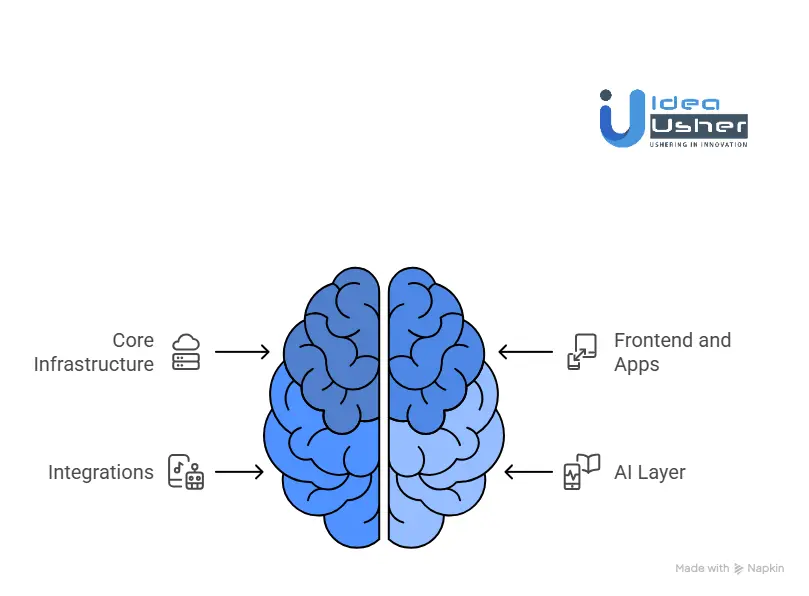
1. The Core Infrastructure
The backend must handle complicated user roles, classroom structures, assignments, and heavy multimedia traffic. Solid options include:
- Node.js or Django (Python): Good choices for fast development, real-time features, and access to mature ecosystems.
- Go (Golang): Ideal when high speed and concurrency are priorities. Excellent for serving video metadata, analytics, and high-volume APIs.
- .NET: A dependable, enterprise-level framework suited for districts or states with large data requirements and Microsoft-focused environments.
2. Frontend and Apps
Students and teachers expect a smooth experience on every device.
- Mobile (iOS and Android): Flutter or React Native: A single codebase reduces development time and ensures consistent performance on tablets, Chromebooks, and phones commonly used in schools.
- Web: React.js or Next.js: These frameworks provide fast, interactive web experiences suitable for teachers using laptops or classroom displays.
3. Integrations
A strong learning app must connect to existing school systems without adding friction.
SSO and Rostering
Implementing standards such as OneRoster, SAML, and LTI 1.3 allows students and teachers to log in with their school accounts while classes sync automatically.
LMS Integration
Direct connections to Google Classroom, Canvas, Clever, and ClassLink enable automatic assignment creation and grade passback, which are features educators expect.
4. AI Layer
This layer helps your platform go beyond static quizzes and adapt to individual student needs.
Model Strategy
Open-source models such as Llama or Mistral offer flexibility and predictable costs. We fine-tune them using your instructional content to create helpful explanations, tutoring prompts, and practice questions.
Privacy and Compliance
To remain COPPA-compliant, all AI runs are performed in private, isolated environments using Google Vertex AI or AWS Bedrock. Data is never sent to a public API, and student information remains protected.
Conclusion
The moment for BrainPOP-style learning platforms is clearly speeding up, and you can see how real success will depend on strong content pipelines, solid system architecture, tight compliance, and smooth LMS integration. A team may need a long-term roadmap rather than a quick MVP, and IdeaUsher can genuinely help by handling complex EdTech engineering and advanced content systems while integrating AI features that can scale reliably.
Looking to Develop a Kids’ Learning App Like BrainPOP?
Idea Usher can help you build a BrainPOP-style app with strong integrations, reliable video delivery, and adaptive learning systems, backed by over 500000 hours of coding experience and a team led by ex-MAANG FAANG engineers.
You will get a platform that schools can trust and students will enjoy because every feature is engineered with real technical care. We will guide you through each stage so your product can launch smoothly and scale confidently.
- Seamless School Integration: We build full LTI/OneRoster compliance, so your app plugs directly into any school’s LMS (like Google Classroom or Canvas) from day one.
- Scalable, Secure Delivery: Our architecture ensures high-quality video streams to thousands of concurrent users without buffering, all within a COPPA/FERPA-compliant “walled garden.”
- Differentiated Learning Engines: We create the data backbone for personalized learning paths, adaptive quizzes, and tools that support every student.
- Pedagogy-First Design: We partner with you to ensure the platform is not just fun, but instructionally sound and curriculum-aligned.
Your vision for the next generation of learning deserves a team built for the toughest tech challenges. Let’s make it.
Work with Ex-MAANG developers to build next-gen apps schedule your consultation now
FAQs
A1: Building a platform that feels like BrainPOP usually takes six to eighteen months because you must design the core architecture, implement secure data systems, and build content pipelines that can scale. You will likely refine user flows early, then develop modules for video delivery, assessments, and dashboards. The work must also include thorough testing so schools can rely on stable performance.
A2: The cost can vary widely because you might need advanced AI models for recommendations, a robust LMS engine, and reliable animation workflows. You will probably invest in compliance work, such as accessibility and data privacy. Development teams often estimate budgets using the level of automation, the number of learning paths, and the expected maintenance needs.
A3: AI will support educators rather than replace them because real teaching depends on judgment, empathy, and context. The system can automate grading, track mastery signals, and suggest interventions. Educators can then focus on instruction while the platform quietly handles a large part of the analytic workload.
A4: Schools usually select annual licenses because they want predictable costs and continuous updates. This model will help them plan budgets and ensure that content libraries stay fresh. Vendors can also deliver new features gradually so institutions can adopt improvements without disruptive rebuilds.
